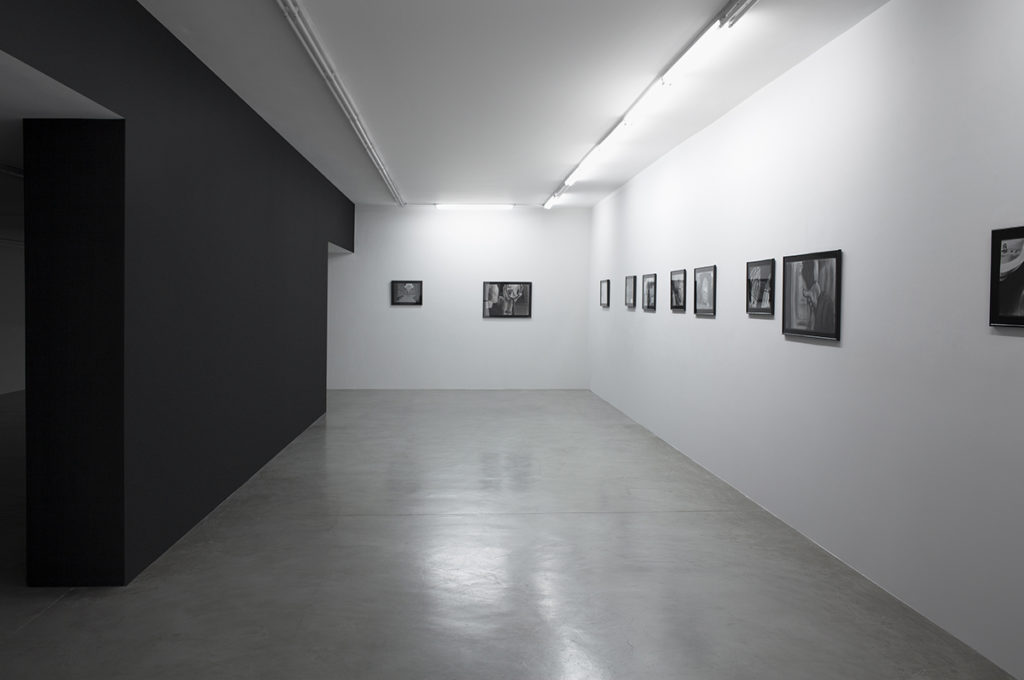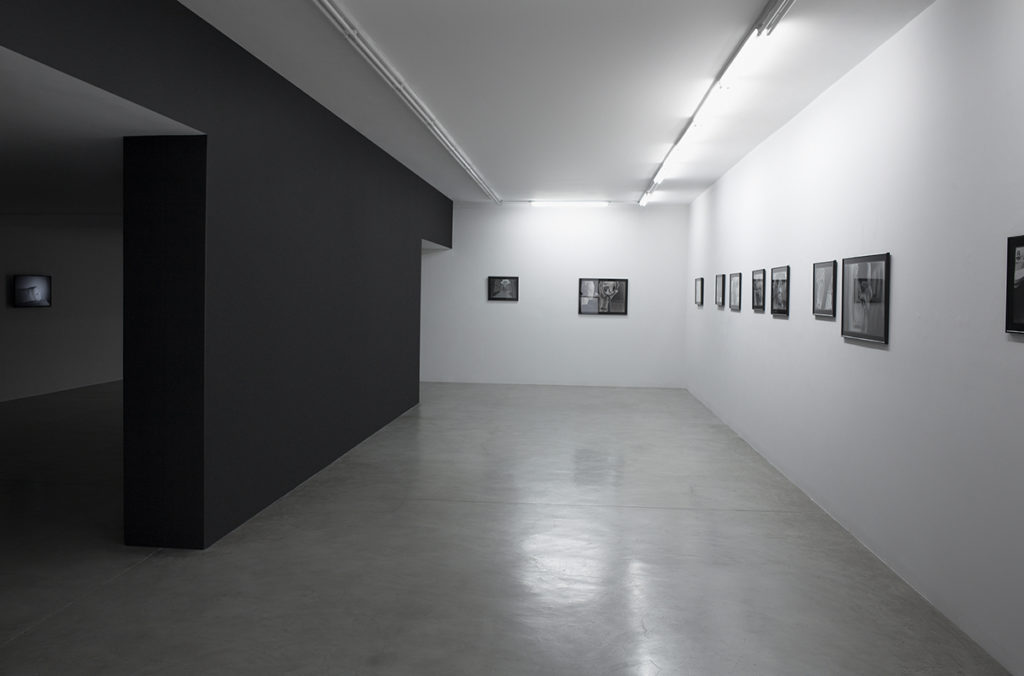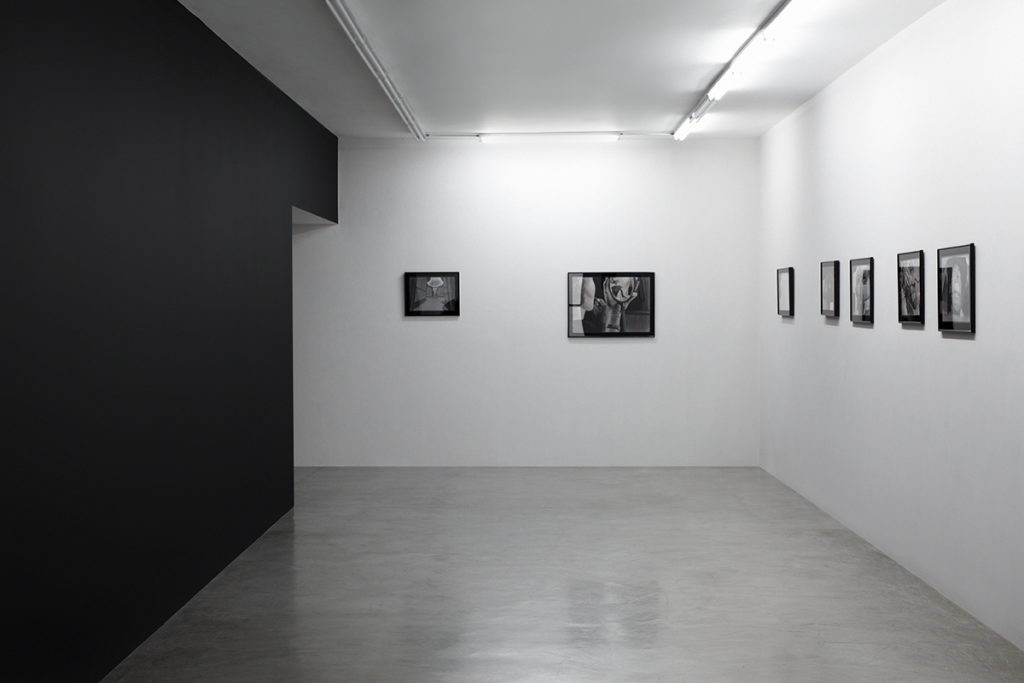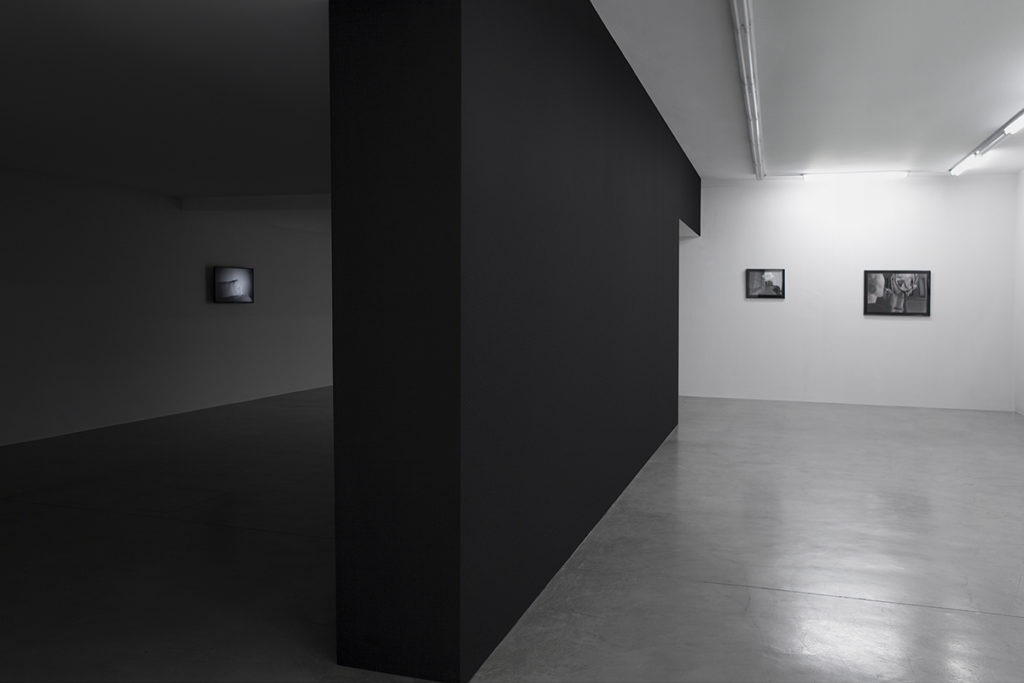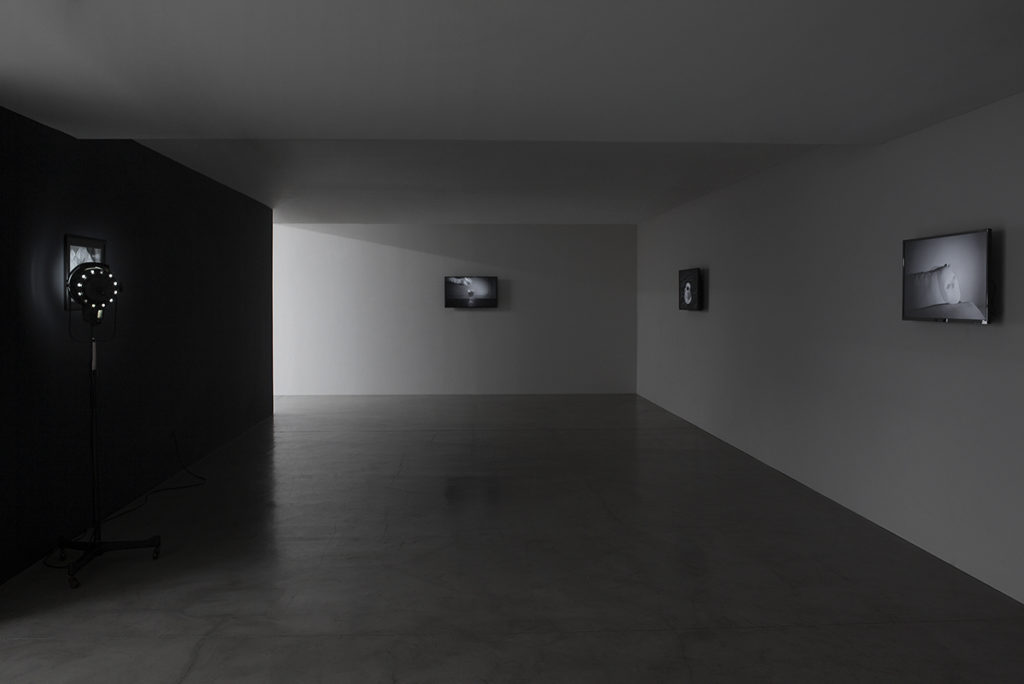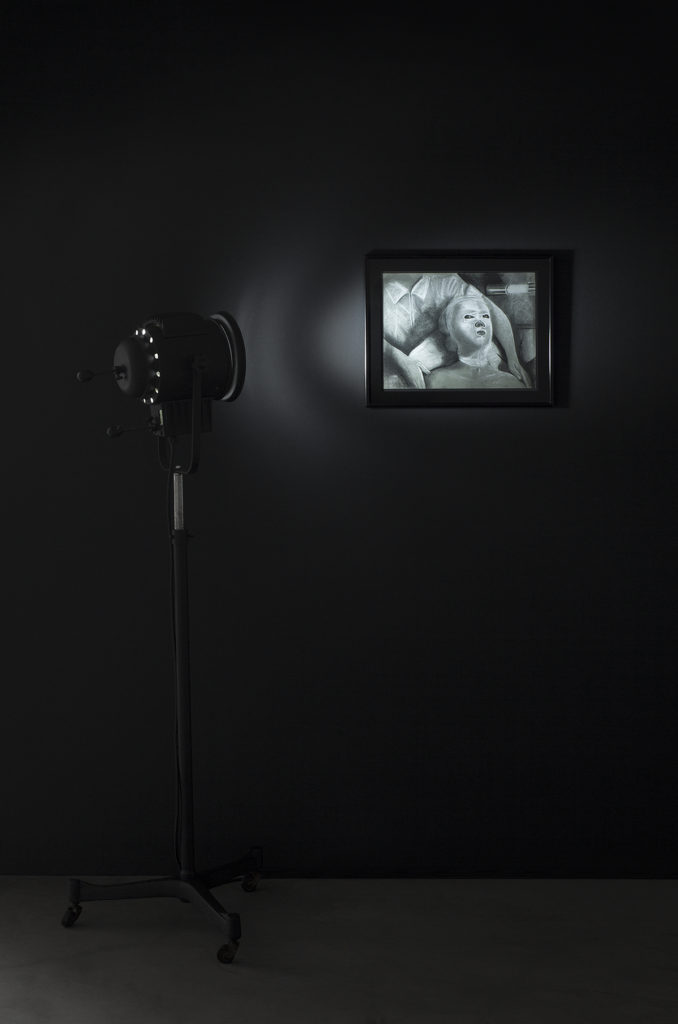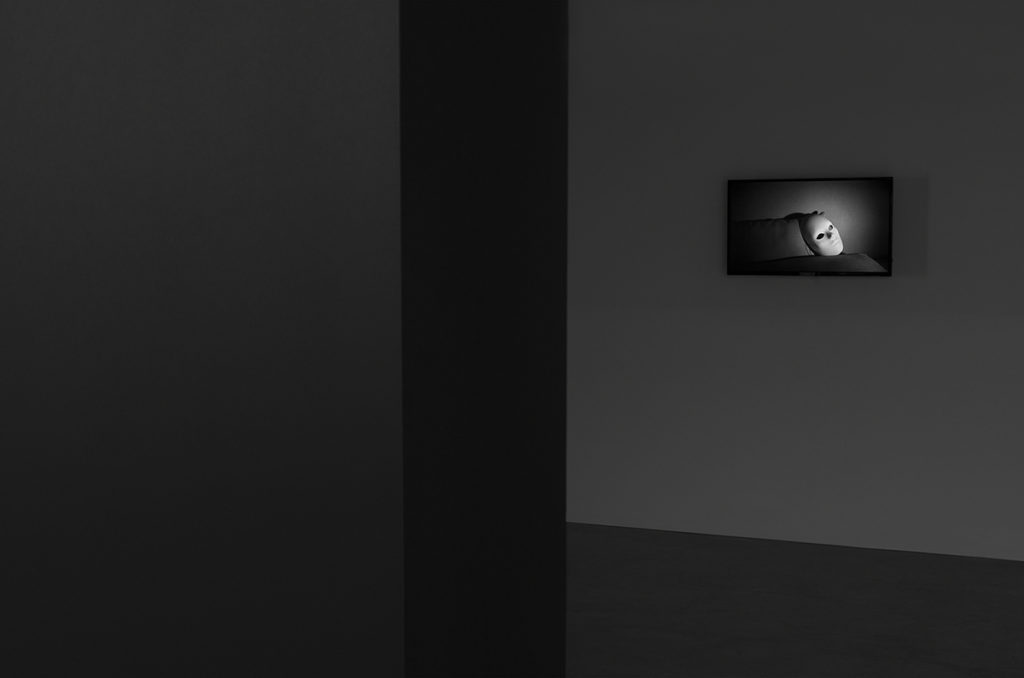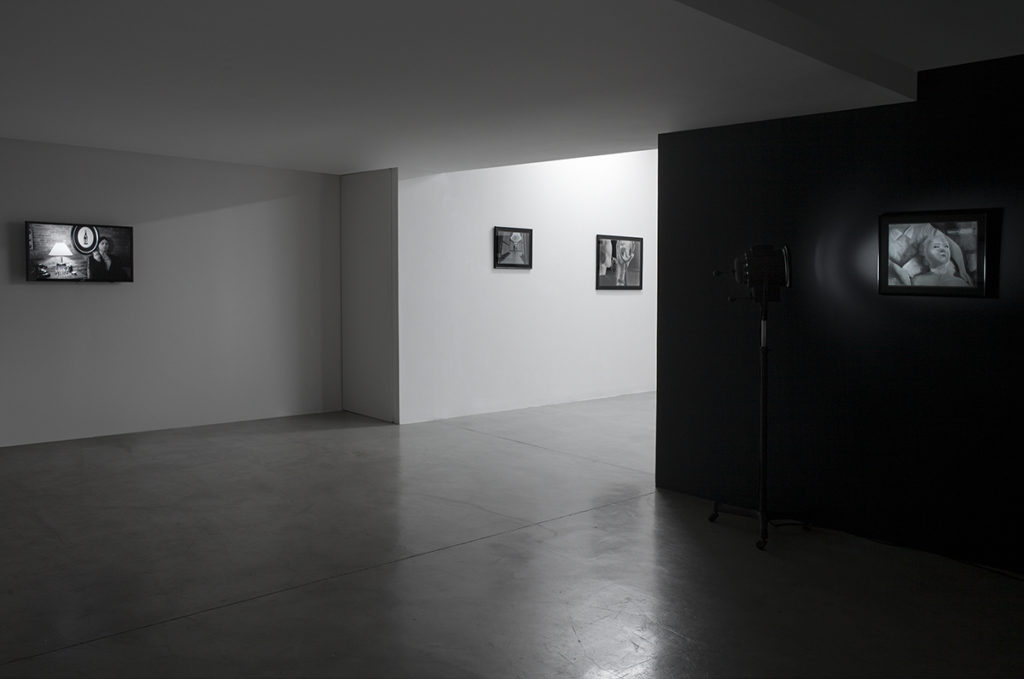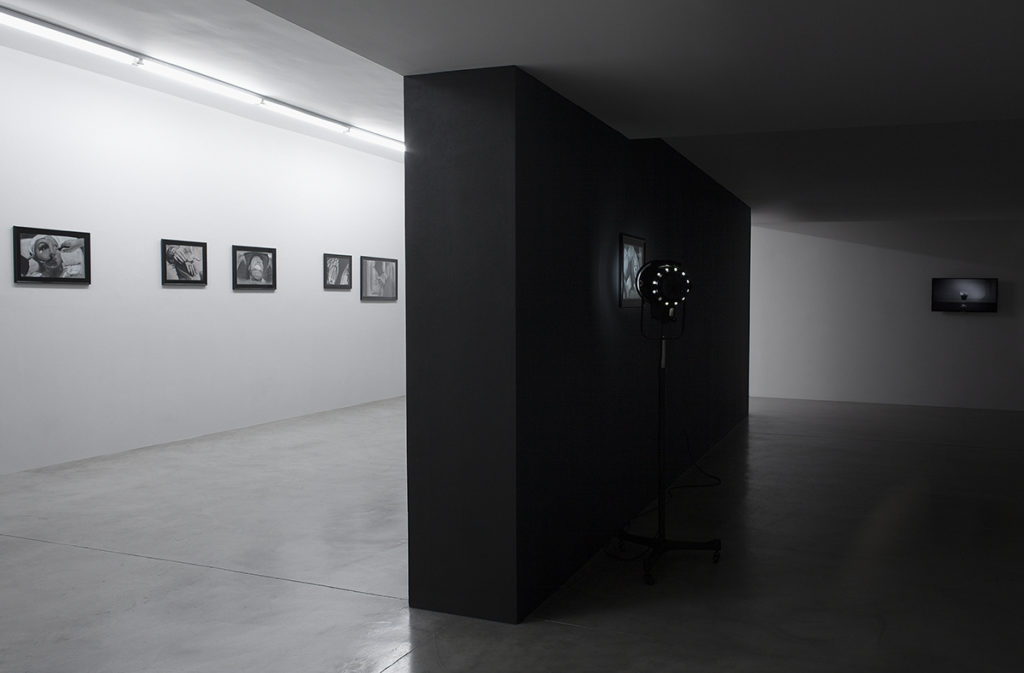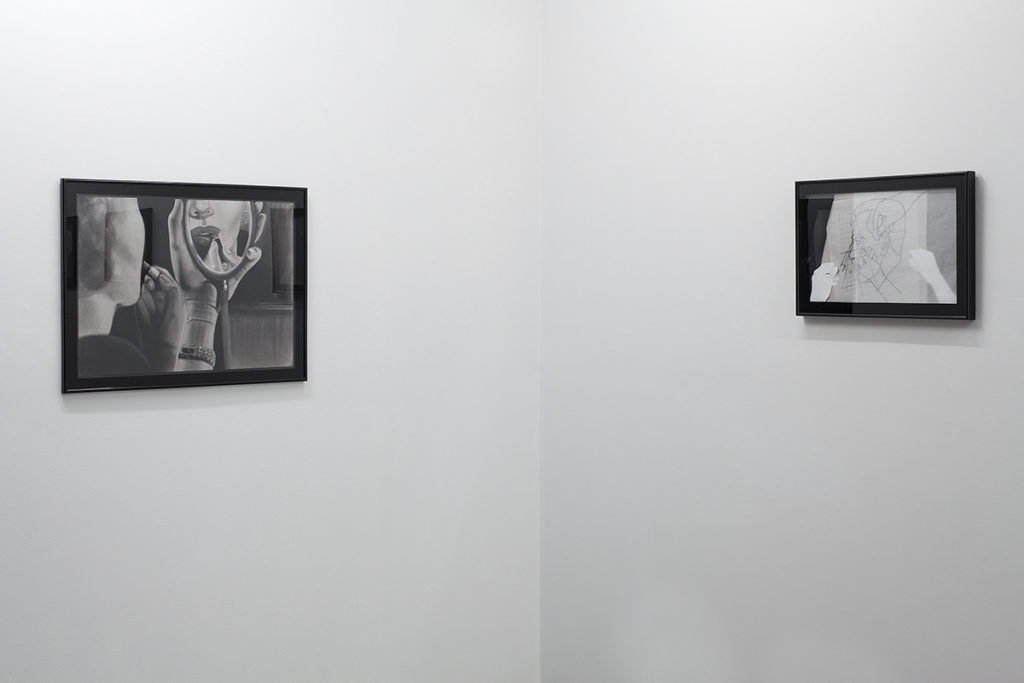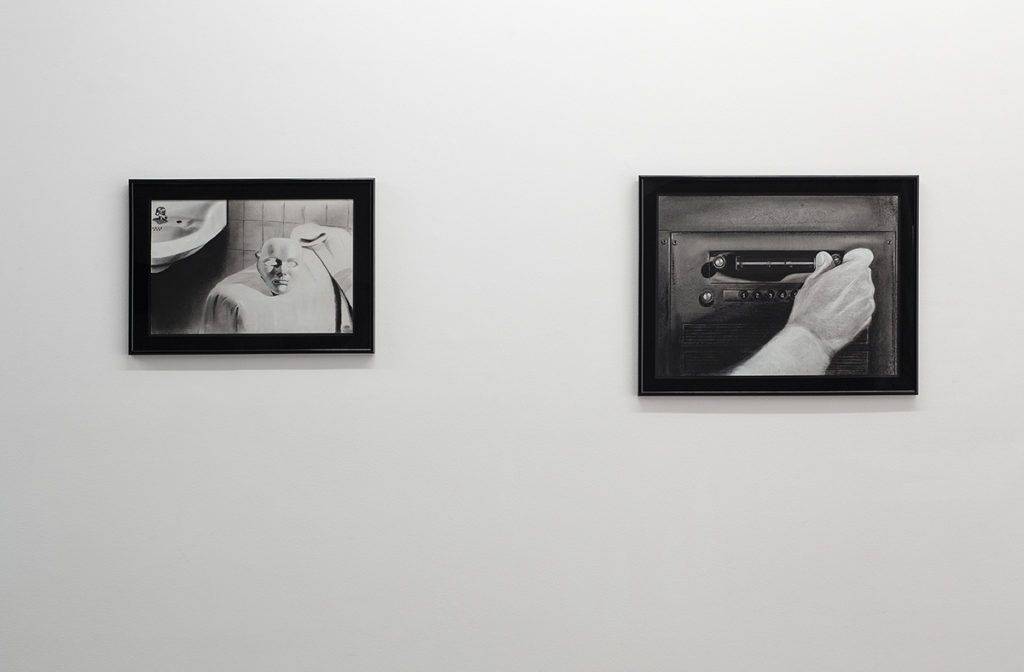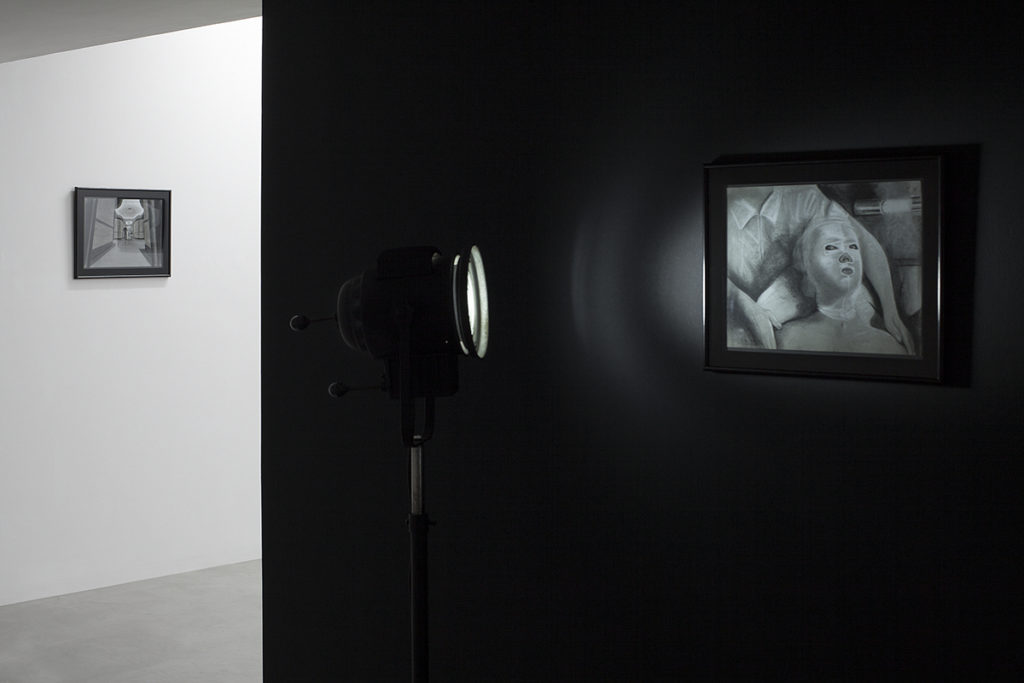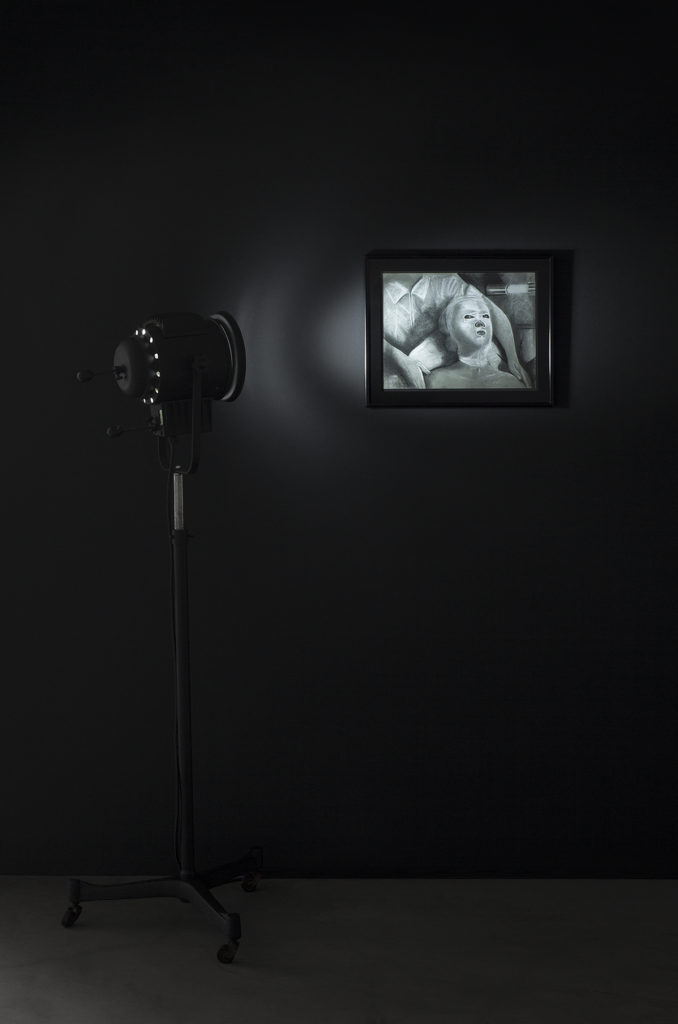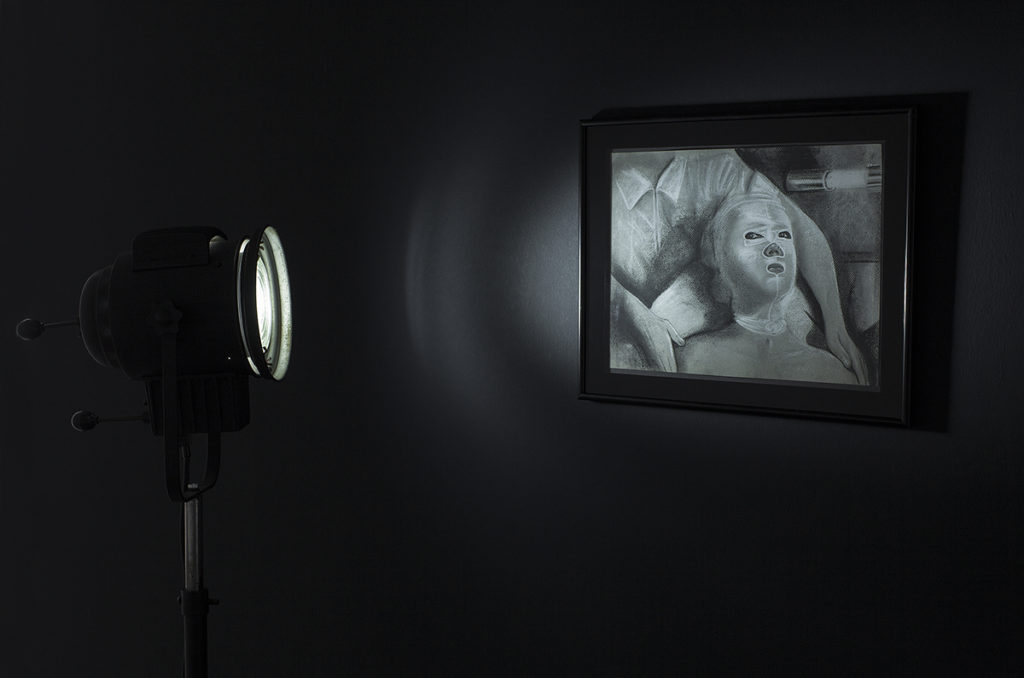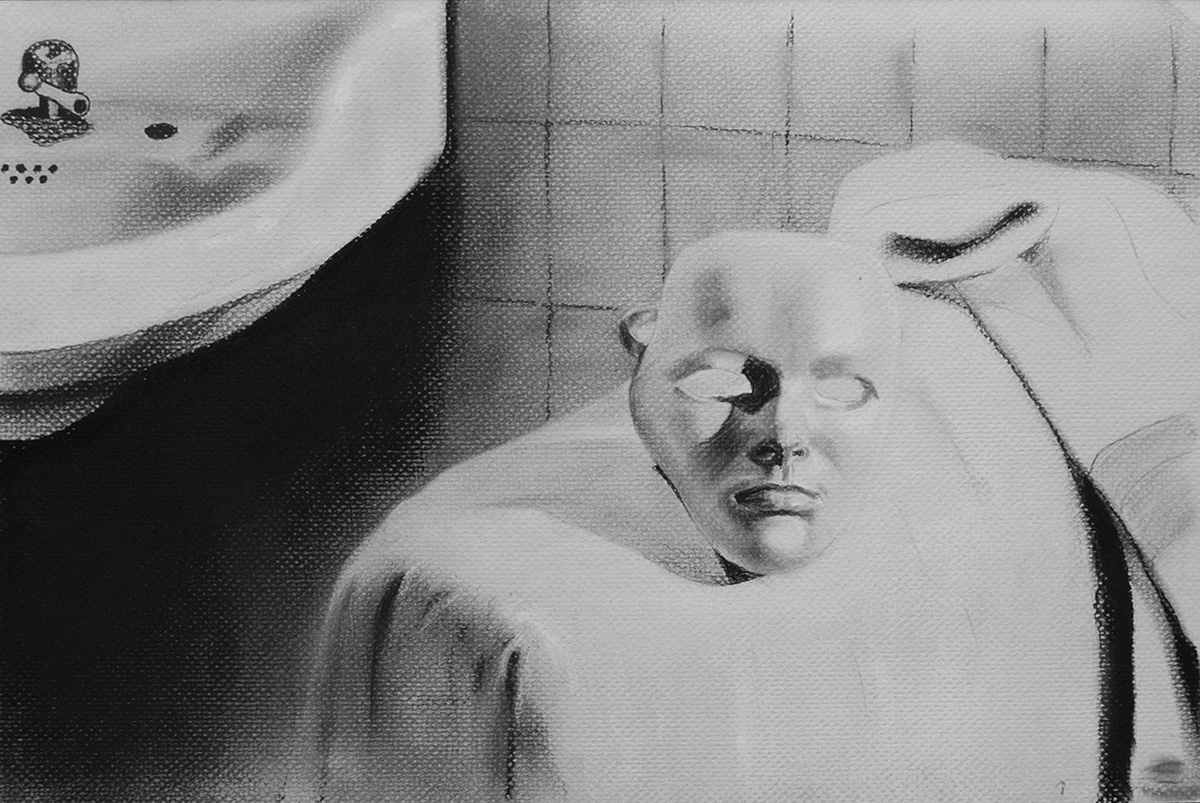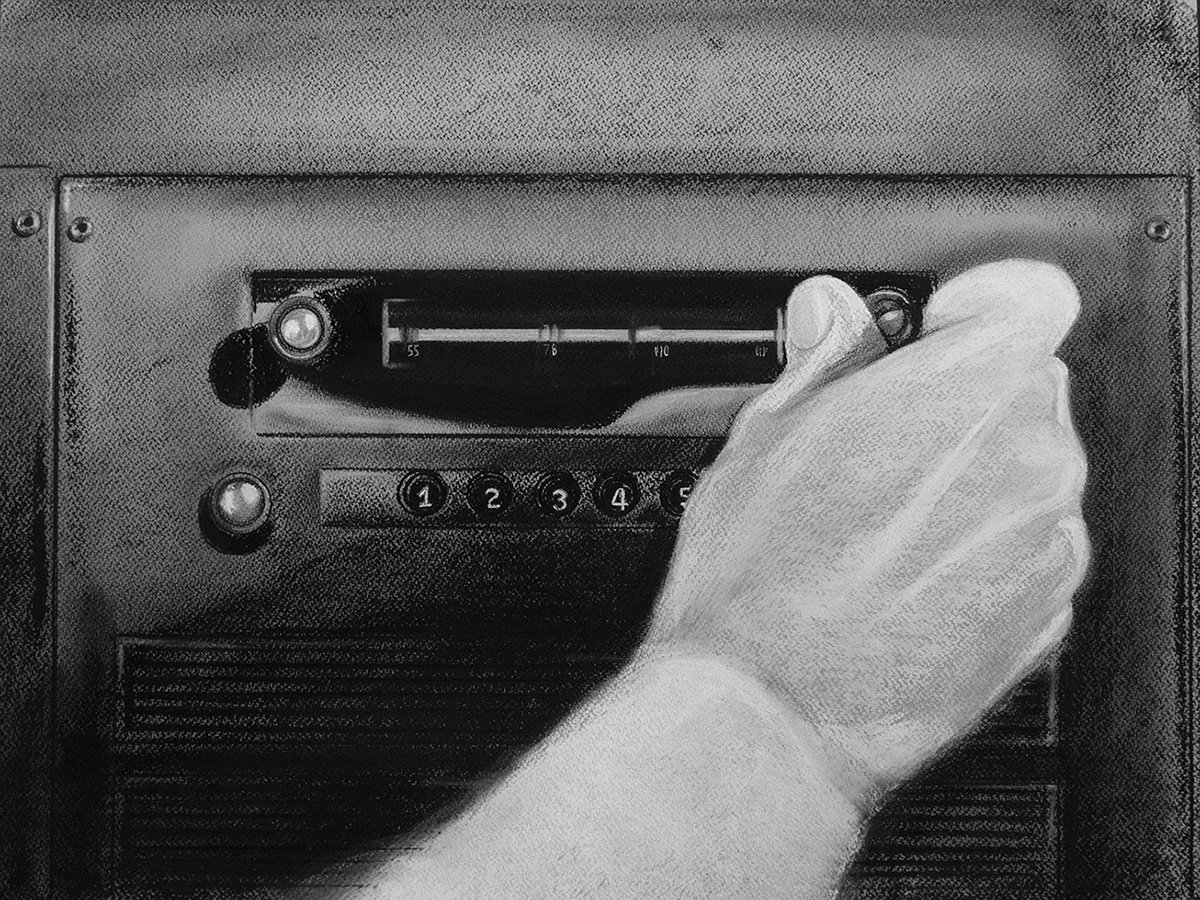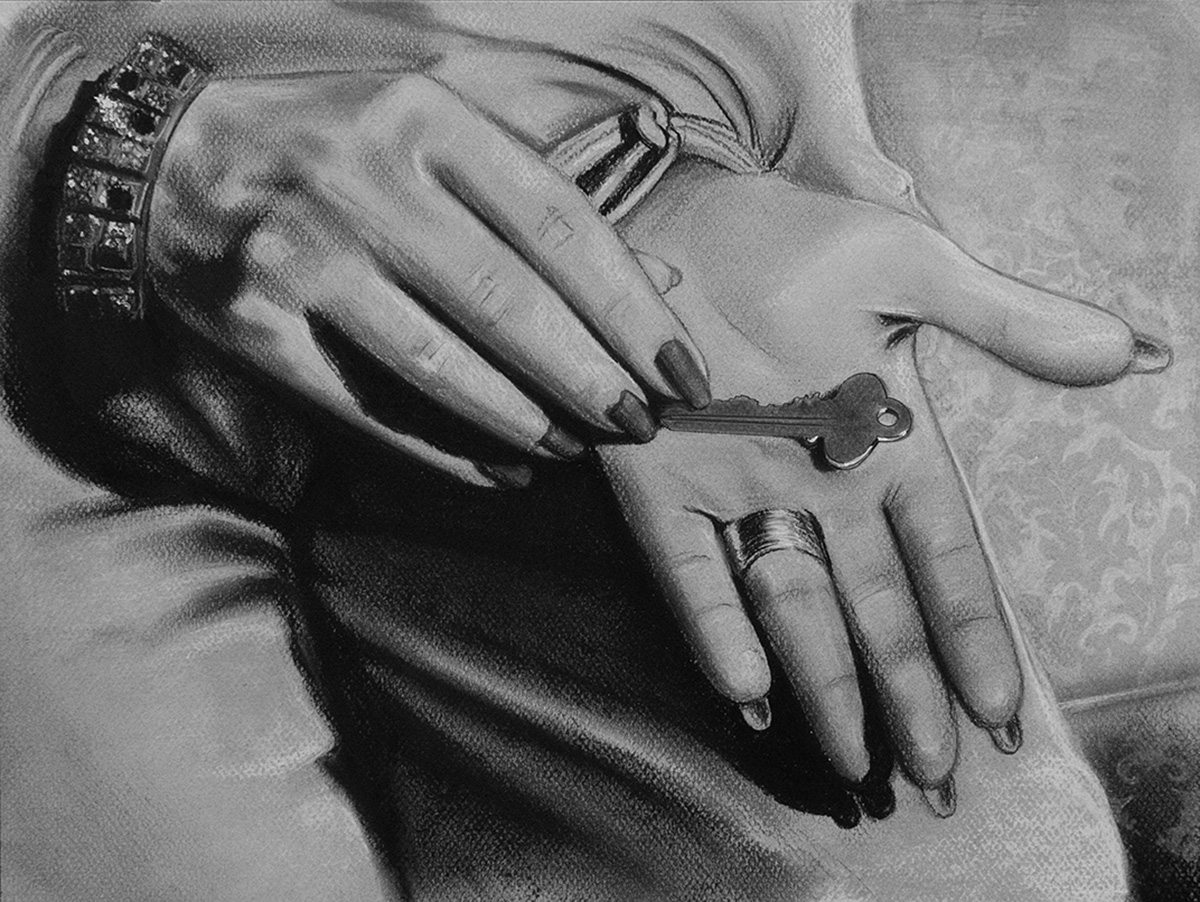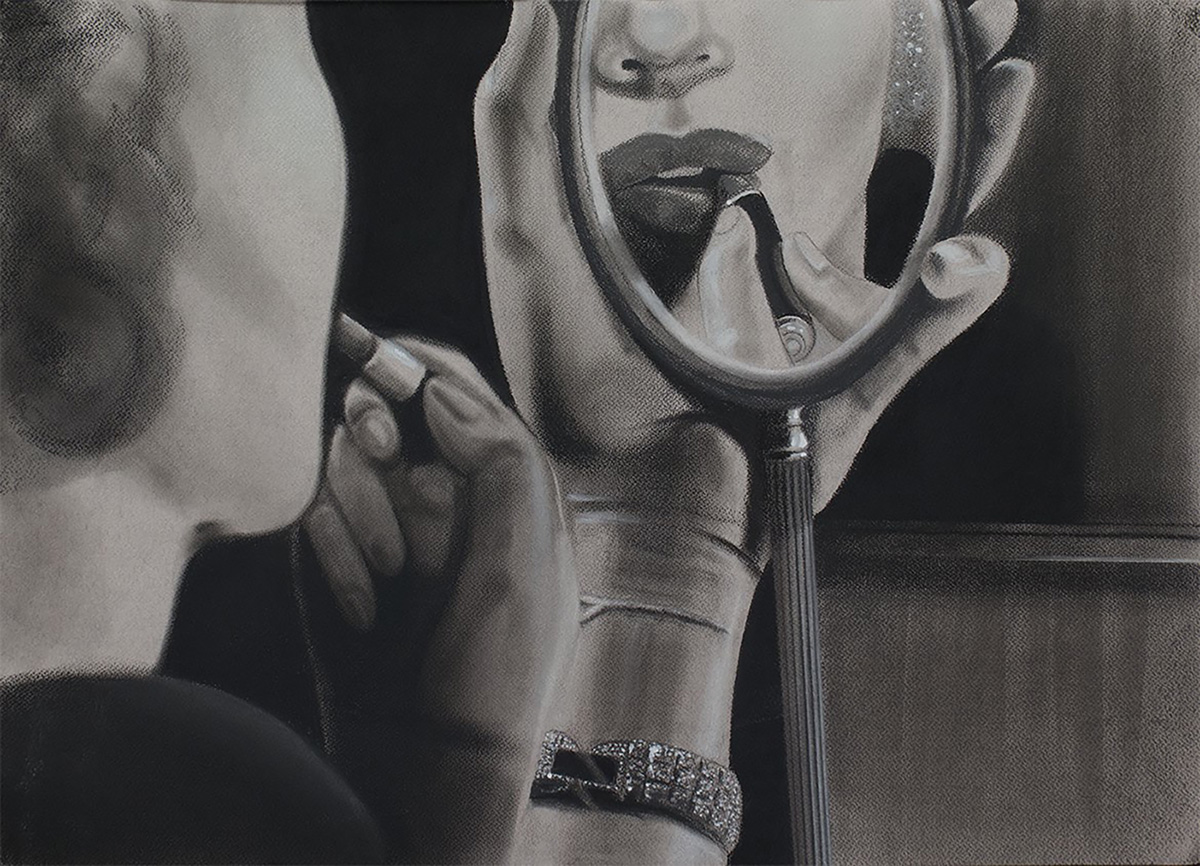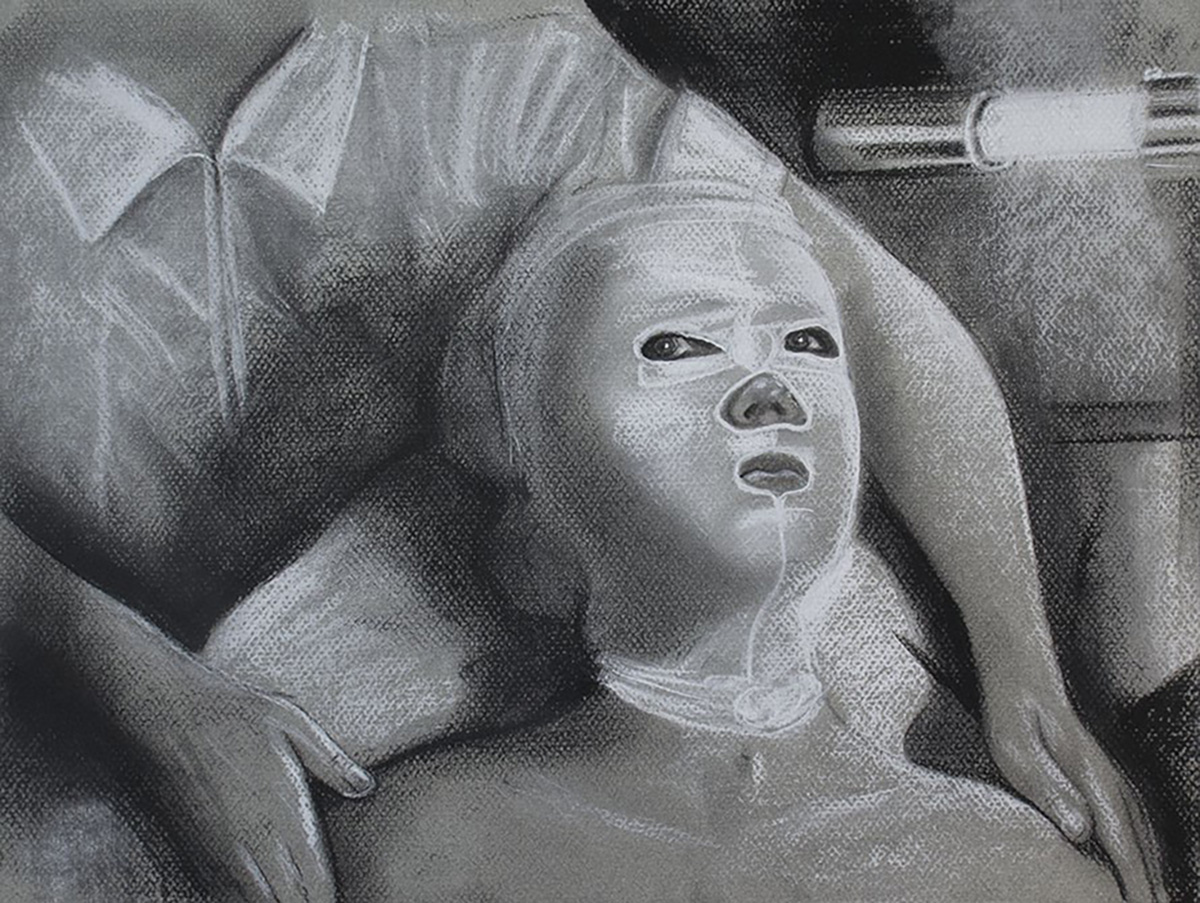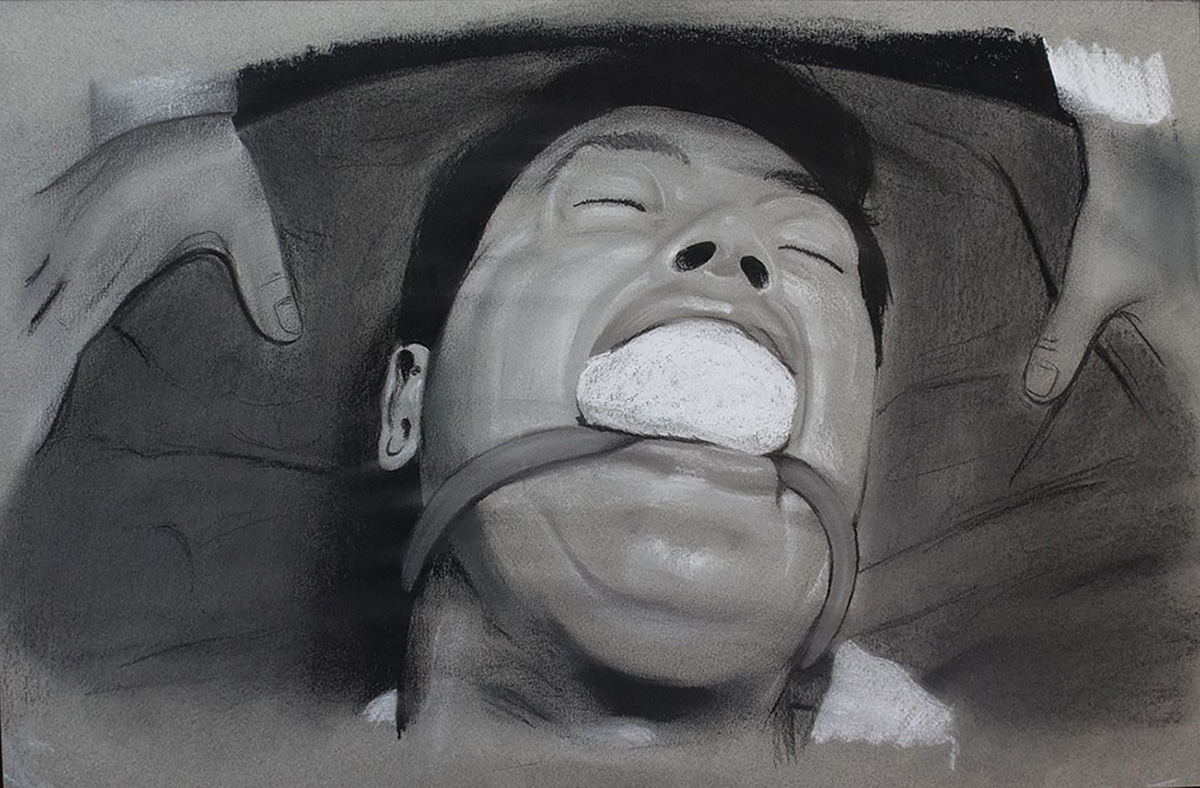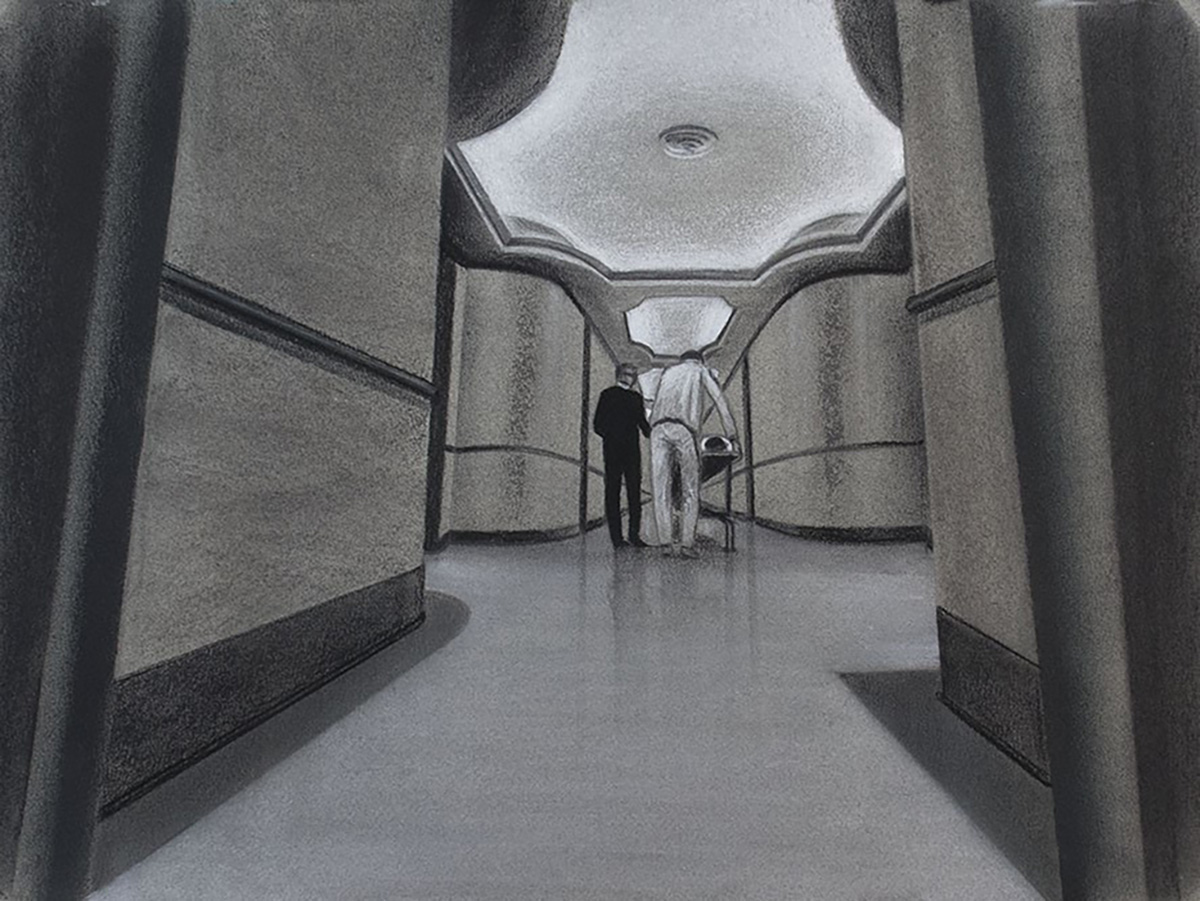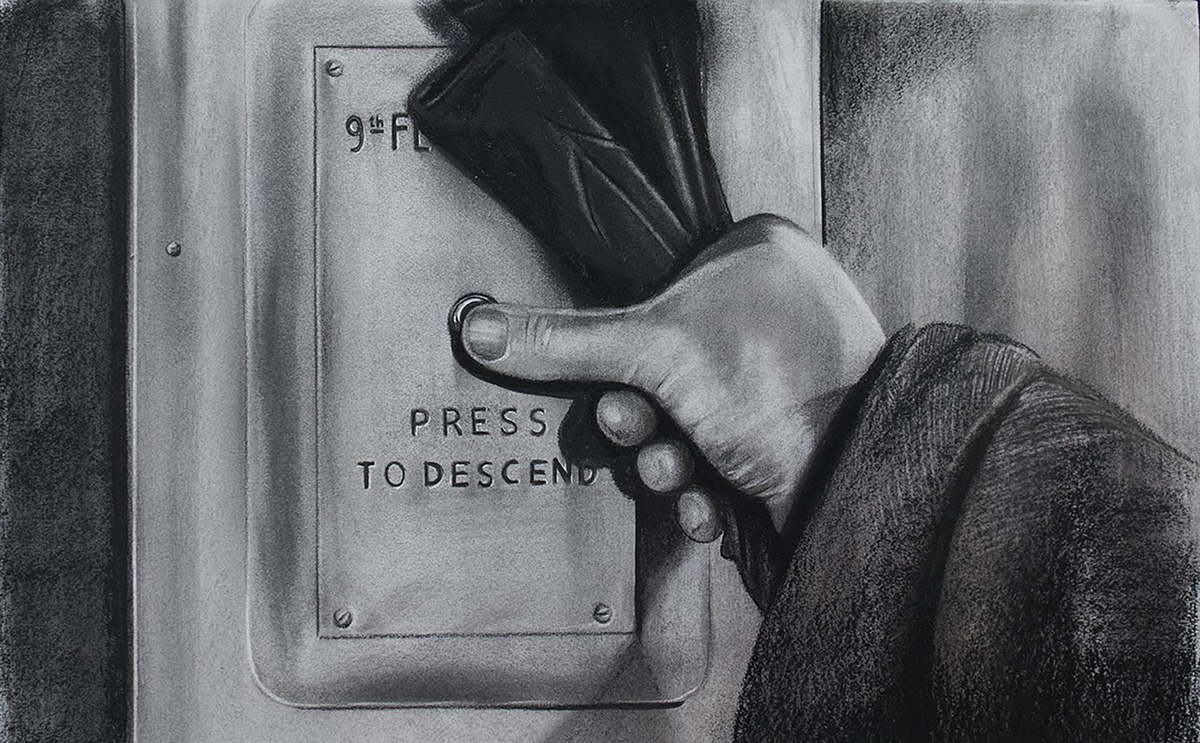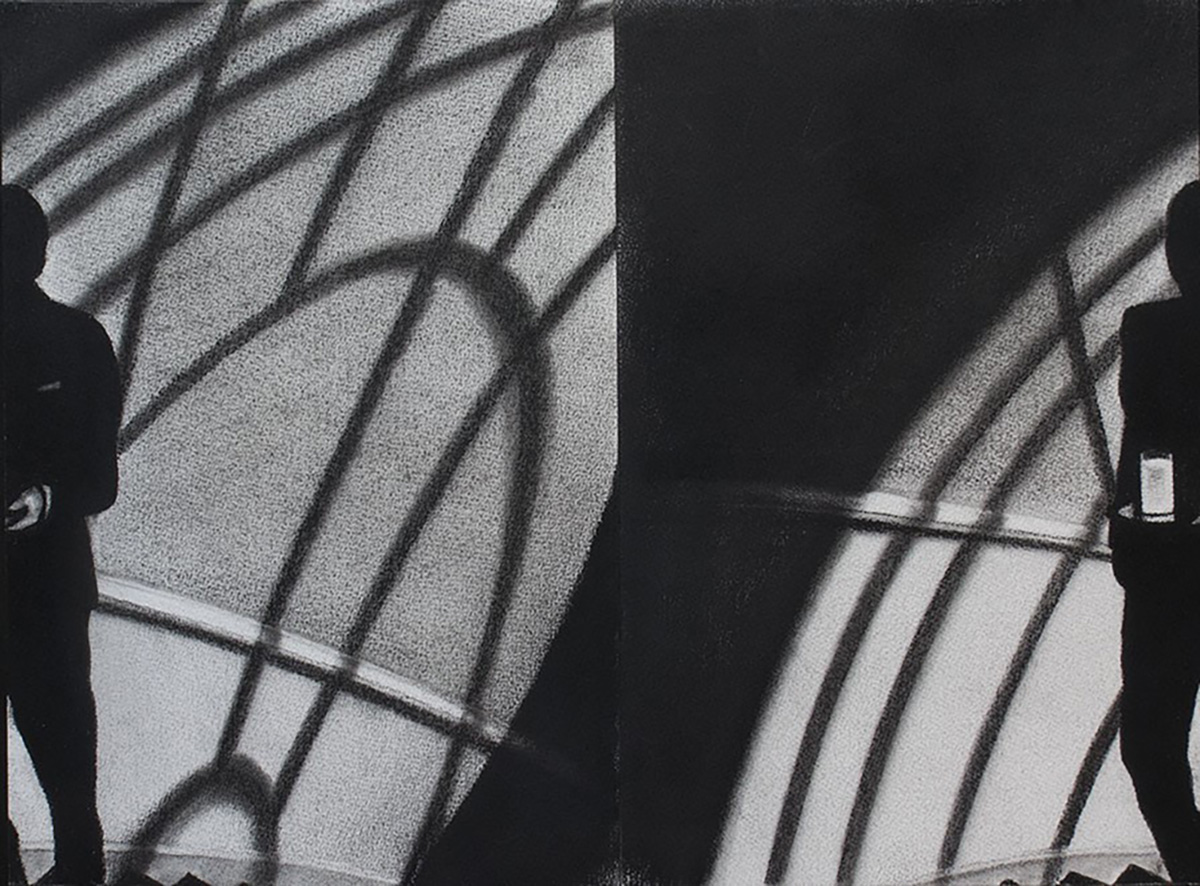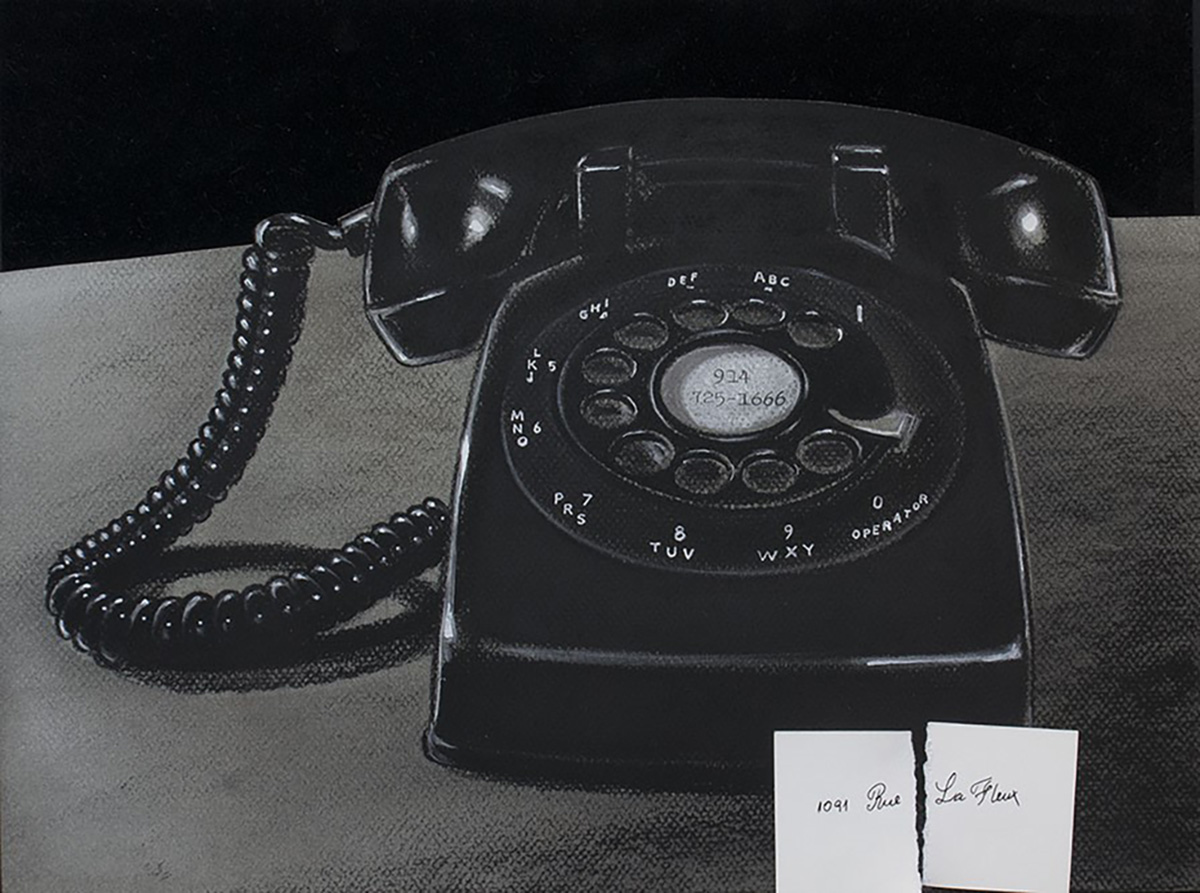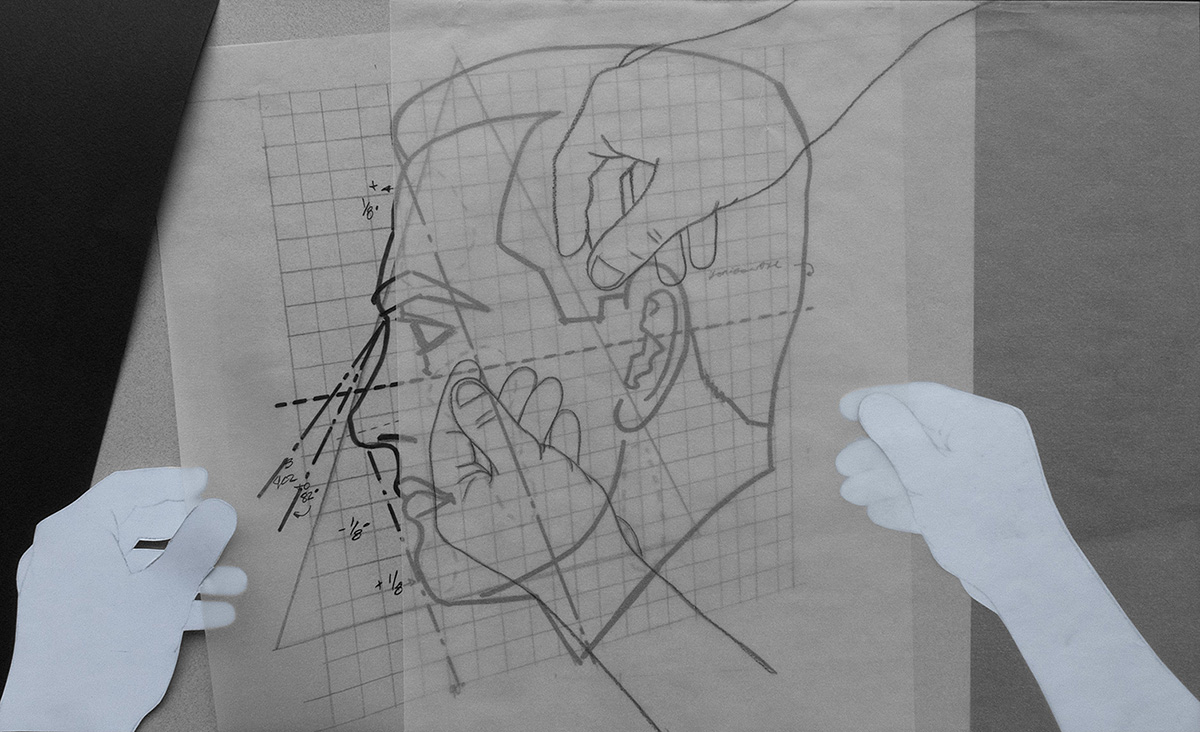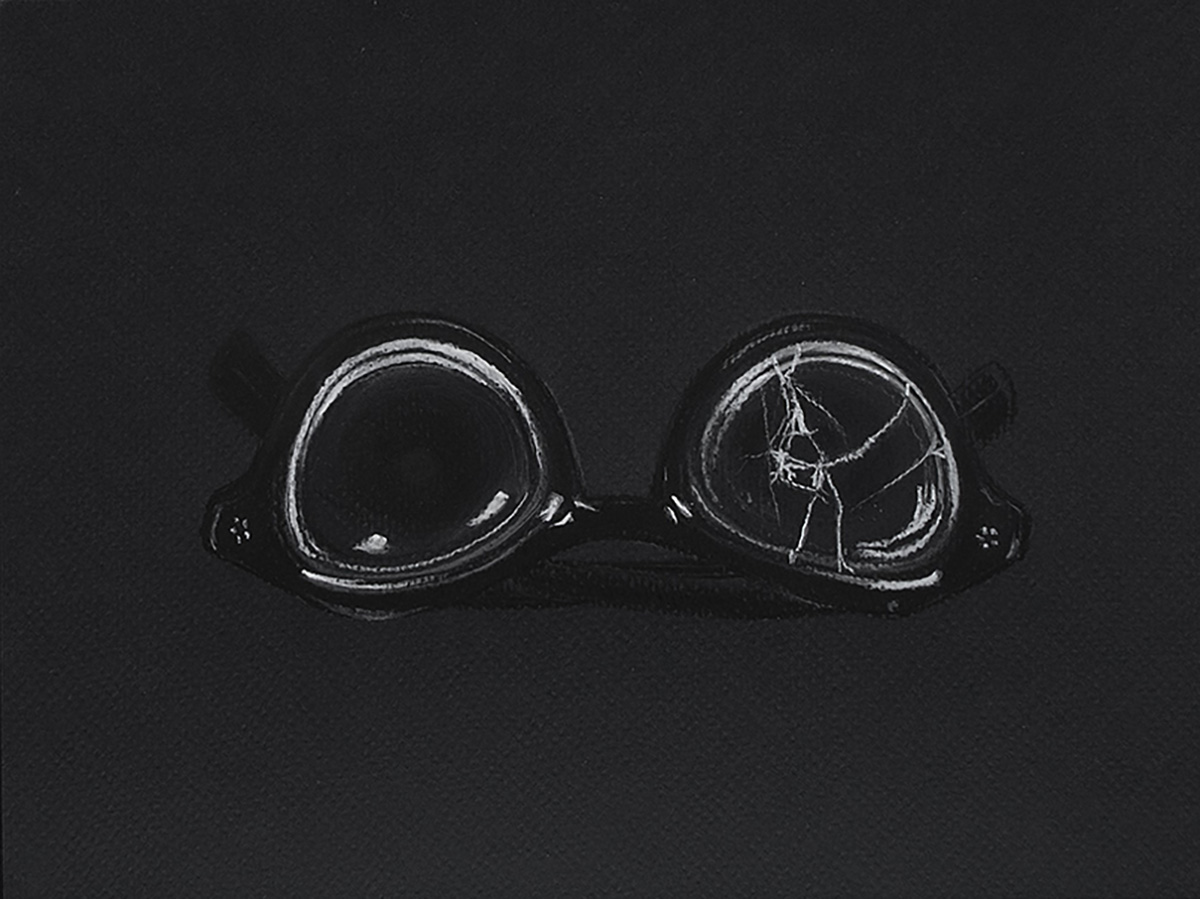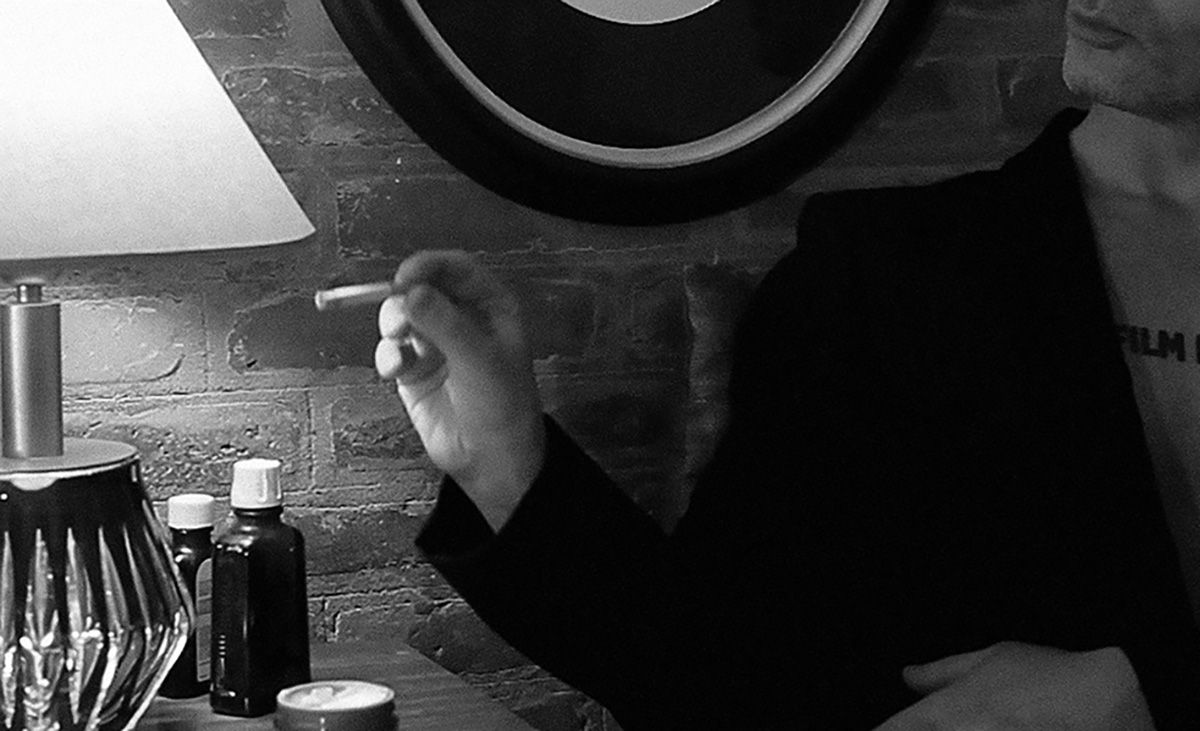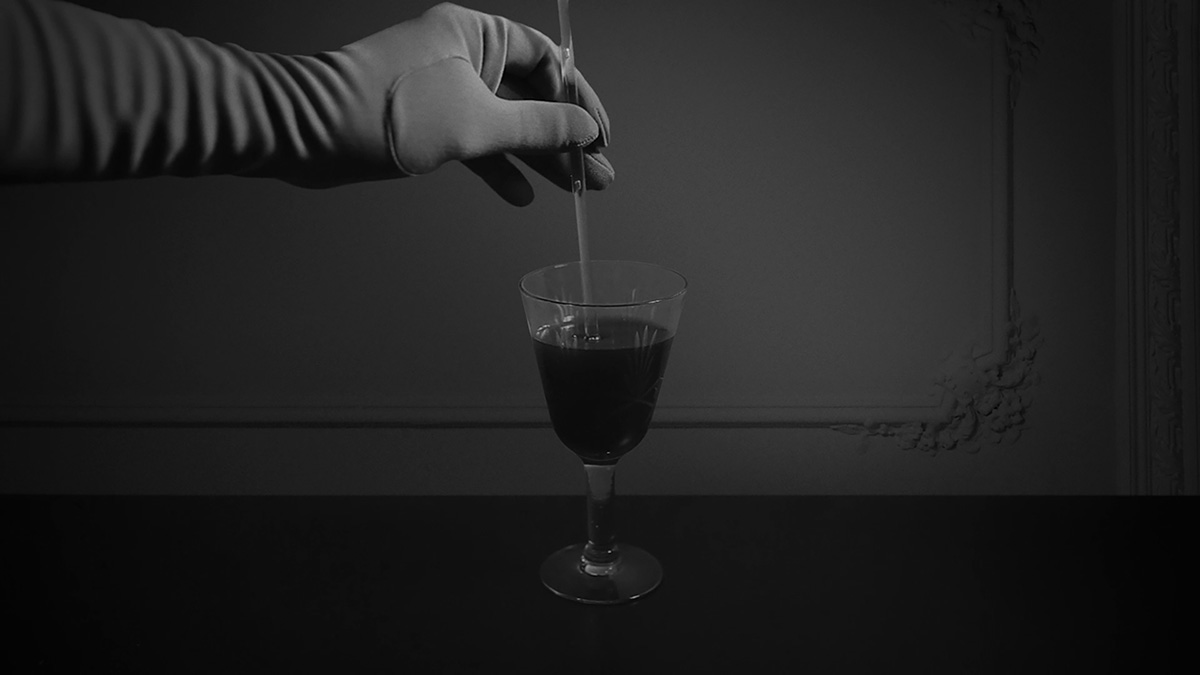FILM FATALE
MARTIN SICHETTI
CURATED BY FLORENCIA QUALINA
MAR 12. — APR. 2019
EXHIBITION VIEW
Ph. Ignacio Iasparra
WORKS
Tratamiento I, series Fatale, 2018
Martín Sichetti
Pencil and pastel on paper
12.4 x 19.6 in
Tratamiento II, series Fatale, 2018
Martín Sichetti
Pencil and pastel on paper
12 x 15.9 in
1091 Rue La Fleur, series Fatale, 2018
Martín Sichetti
Collage, pencil, pastel, paper and velvet
12 x 15.7 in
Para ser otro, series Fatale, 2018
Martín Sichetti
Collage, pencil, marker and paper on paper
12 x 19.6 in
TEXT
Detour. Hidden Keys, Masks, and Scars
At the core of Film Fatale is film noir. On the basis of a large body of films that revolves around the noir universe, Martín Sichetti creates a world inhabited by desperate, wounded characters on the verge of committing a crime; each image reveals a moment of rupture from which there is no turning back. Film noir is less a genre than a spirit of laconic speech that always knows just what to say at the end: “All right, Mr. Demille, I’m ready for my close-up”; “Everybody’s somebody’s fool.” The noir soul is the air of women who want to get rid of their husbands; crimes of rancor—resentment at lost youth is a powerful energy; the past returning like a fire that ravishes everything in its path. Fate—usually tragic— is revealed when love, the final promise of redemption, turns out to be a wily trap, or the plan to make a final go of it and start anew someplace else with a different identity fails. Sometimes a fall of that proportion can occasion a grin, like the one on James Cagney’s face before the explosion in White Heat when he says, “Made it to the top of the world, Ma!”
The spirit of Film Fatale is, at times, akin to Joyce Carol Oates’s observation of Marilyn Monroe in Blonde: “The Blond Actress had become skeptical. To be skeptical is to be melancholy. To be melancholy is to be publicly funny. ” The torn card that reads 1091 Rue La fleur—the address of the mansion where Lisle “SIEMPREVIVA” Von Rhuman administers, with askance, her magic potion that gives eternal youth—leads only to gloomy comicalness. And the burnt-out cigarette in a cleansing cream, and the gestures of the vamp that puts it out.
Film noir theory points out that its roots lie in expressionist German film: stark contrasts of light and shadow, night as narrative setting, and fraught sexual struggle represented as an ancient and mysterious forces as devastating as it is uncontrollable. Film Fatale—with images in black and white, and only black and white, and a pathos centered on faces and hands—may also operate in the expressionist domain; it too partakes of a world governed by excess. Martín deliberately chooses another time, the mid-twentieth century, to tell a story of passions that imply brilliance and decay in equal measure.
Florencia Qualina
